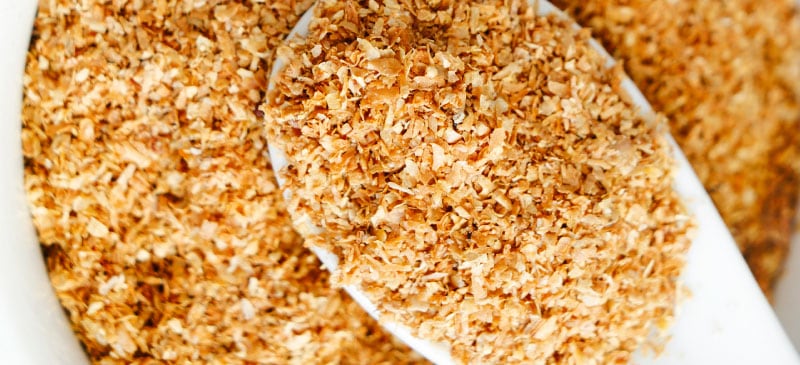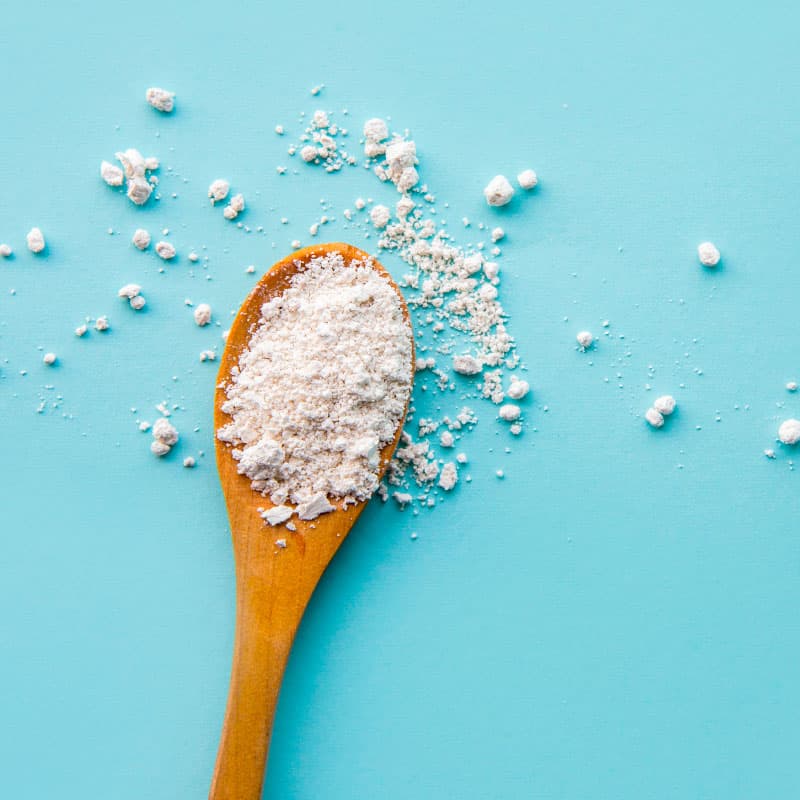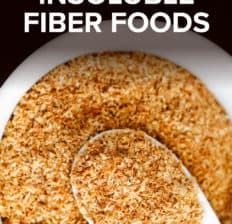This Dr. Axe content is medically reviewed or fact checked to ensure factually accurate information.
With strict editorial sourcing guidelines, we only link to academic research institutions, reputable media sites and, when research is available, medically peer-reviewed studies. Note that the numbers in parentheses (1, 2, etc.) are clickable links to these studies.
The information in our articles is NOT intended to replace a one-on-one relationship with a qualified health care professional and is not intended as medical advice.
This article is based on scientific evidence, written by experts and fact checked by our trained editorial staff. Note that the numbers in parentheses (1, 2, etc.) are clickable links to medically peer-reviewed studies.
Our team includes licensed nutritionists and dietitians, certified health education specialists, as well as certified strength and conditioning specialists, personal trainers and corrective exercise specialists. Our team aims to be not only thorough with its research, but also objective and unbiased.
The information in our articles is NOT intended to replace a one-on-one relationship with a qualified health care professional and is not intended as medical advice.
25 Insoluble Fiber Foods & Surprising Benefits Beyond Constipation Relief
February 2, 2025

Why is it so important to eat high-fiber foods? Insoluble fiber and soluble fiber each have unique benefits.
Insoluble fiber is the type that helps prevent constipation, cleans out the gastrointestinal tract and even helps protect against serious problems like colorectal cancer.
The Dietary Guidelines for Americans states that adults should aim to get about 14 grams of total fiber each day for every 1,000 calories they eat. Unfortunately, it’s estimated that the average American consumes only about half of the recommended amount of dietary fiber on most days — due to eating lots of processed foods and refined grains and not eating enough vegetables, fruits, legumes and so on.
So which foods should you eat more of to get more fiber, particularly insoluble fiber, into your diet? Let’s explore.
What is insoluble fiber?
Fiber is defined as dietary material containing substances such as cellulose, lignin and pectin that are resistant to the action of digestive enzymes. In other words, fiber is the substance found in plant foods (carbohydrates) that is not metabolized in the stomach and intestines, but rather passes through the gastrointestinal tract and makes up a part of stools.
There are two main types of dietary fiber:
- Insoluble fiber, which does not dissolve in water and is left intact and undigested. Insoluble fiber can help speed up the passage of food through the stomach and intestine. It also adds bulk to the stool and can help relieve constipation.
- Soluble fiber, which dissolves in water, retains water and forms a gel-like substance in the colon. It slows down digestion and nutrient absorption from the stomach and intestine.
Which foods are high in insoluble fiber? Some examples include wheat bran, many types of vegetables, nuts and seeds, potatoes, fruit with skin, legumes, and whole grains.
There are actually several different types of insoluble fibers found in various foods, some of which include cellulose and lignin fibers.
Health benefits
1. Helps prevent and treat constipation
One of insoluble fiber’s main jobs is to provide bulk in the intestines and form stool, which leads to regular bowel movements and constipation relief. Insoluble fiber does not dissolve in water like soluble fiber does, so it helps move material through the colon by increasing the bulk of stools.
2. Slows down absorption of carbohydrates/sugar
While fiber is found in carbohydrate foods, it doesn’t raise blood sugar levels. In fact, it helps slow down absorption of sugar from carbs, which is beneficial for stabilizing blood sugar.
A diet high in both types of fiber has other metabolic and health benefits too, such as protecting against obesity, cardiovascular disease, diabetes and metabolic syndrome.
3. Can help with appetite control and weight management
Insoluble fiber found in high-fiber foods can help make you feel full and keep you satisfied between meals. Insoluble fiber is also not technically a source of calories since it’s undigested and remains intact once eaten.
4. May help prevent GI issues like diverticulosis and hemorrhoids
Insoluble fiber helps speed up the movement and processing of waste in the digestive system, which is why it’s useful for producing regular bowel movements. It may also help prevent gastrointestinal blockages and straining that accompanies constipation, which can lead to problems like hemorrhoids.
Additionally, insoluble fiber helps absorb and sweep out byproducts and carcinogens from the gut, lowering the chances of developing problems like SIBO, diverticulosis, etc.
5. May help lower risk for developing colorectal cancer
Studies have found that a higher total dietary fiber intake is associated with a significantly reduced risk of developing colorectal cancer. Two food groups that are high in insoluble fiber, whole cereal grains and whole pieces of fruit, have been shown to be especially protective against colon cancer formation.
Researchers believe that increased fiber intake may have cancer-fighting effects because it leads to a reduction in fecal carcinogens, reduced transit time and bacterial fermentation of fiber to short-chain fatty acids that have anticarcinogenic properties.
Is insoluble fiber good for IBS? This depends on the type of IBS someone has, personal food “triggers” and a person’s specific symptoms, such as whether that person tends to struggle with diarrhea or constipation more often.
Insoluble fiber vs. soluble fiber
What is the difference between soluble and insoluble fiber? Do you need soluble fiber, insoluble fiber or both?
Many foods contain both soluble and insoluble fiber, and both types of fiber are important parts of a healthy diet, since both have been shown to help with appetite control, weight management, digestion, bowel movements, cholesterol balance and so on.
The job of soluble fiber is to create a gel in the digestive system. It helps bind with fatty acids, which is beneficial for maintaining healthy cholesterol levels and heart health.
Soluble fiber also prolongs stomach emptying, which improves absorption of nutrients, provides satiety after eating and controls hunger. This type fiber can also regulate blood sugar levels, helping prevent spikes in blood sugar and risk for problems like insulin resistance or diabetes.
Soluble fiber is found in foods like beans, legumes, oats, barley, berries and some vegetables — many of which also provide insoluble fiber.
Which is better for constipation, soluble or insoluble fiber?
Insoluble fiber is usually better for preventing constipation, although both types of fiber can be helpful for staying regular and free from digestive issues.
Insoluble fiber won’t ferment in the gut, but soluble fiber does ferment in the stomach, which can lead to some bloating and gas. Soluble fiber is digested by bacteria in the large intestine, which wind up releasing gas that sometimes causes lots of flatulence when following a high-fiber diet.
On the other hand, insoluble fiber remains intact while traveling through the GI tract, which helps with constipation and also tends to produce less gas.
This is why a very high-fiber diet may sometimes make IBS symptoms worse, although it depends on the person. Because each person reacts to various fiber-containing foods differently, it’s important to increase these foods in the diet gradually and also to drink plenty of water.
Maybe you’re wondering which type of fiber some of your favorite foods provide? Let’s take a look at a few examples:
- Soluble fiber is found in foods such as oat bran, barley, nuts, seeds, beans, lentils, peas, and some fruits and vegetables.
- Are bananas soluble or insoluble fiber? A banana has about two to three grams of fiber, most of which is insoluble fiber, although it contains both types.
- Is rice soluble or insoluble fiber? A cup of brown rice has about three to four grams of fiber, almost all of which is insoluble.
- Are spinach and lettuce soluble or insoluble fiber? Dark leafy greens are a great source of insoluble fiber. One cup of cooked spinach has about six grams of fiber, about five of which is insoluble fiber.
Insoluble fiber foods
Below are some of the top insoluble fiber foods:
- Wheat bran and wheat germ
- Oat bran
- Beans, lentils and legumes of all kinds (kidney, black, garbanzo, edamame, split peas, lima, navy, white, etc.)
- Berries, including blackberries, blueberries, raspberries, strawberries, etc.
- Whole grains, especially barley, quinoa, sorghum, millet, amaranth, oatmeal and rye
- Turnips
- Green peas
- Okra
- Spinach
- Radishes
- Rutabaga
- Coconut (grated flakes or flour)
- Cocoa
- Apples with skin
- Pears with skin
- Flaxseeds
- Avocado (Florida avocados have more than California avocados)
- Sunflower seeds
- Potatoes and sweet potatoes
- Dried apricots, prunes, raisins, dates and figs
- Almonds
- Walnuts
- 100% whole grain pasta and breads
- Passion fruit
- Popcorn
Supplements and dosage
How much insoluble fiber should you get each day? There isn’t currently a recommended daily intake of strictly insoluble fiber, but rather total fiber.
How much fiber per day? The recommended intake for total fiber (soluble and insoluble combined) for adults 50 years and younger is 38 grams per day for men and 25 grams per day for women.
Adults over 50 may struggle with indigestion if they consume too much fiber, so around 30 grams for men and 20 to 25 grams for women per day are recommended, although eating more is not a bad thing if it doesn’t cause any issues.
Food labels usually show the total grams of fiber per serving, not just grams of insoluble fiber. This can make it difficult to know exactly how much of each type of fiber you’re consuming — however, the real goal should be to eat a variety of high-fiber foods, rather than focusing too much on the numbers.
While it’s ideal to get fiber from whole foods, fiber supplements are an option for people who can benefit from getting even more insoluble fiber, such as to help prevent constipation. In supplement form, fiber is extracted from natural sources, such as psyllium husk, konjac root and gum arabic, in order to form a concentrated dose.
Each fiber product has a different strength, so always follow directions carefully, starting with a lower dose and increasing if needed, while also drinking plenty of water.
If you’re experiencing diarrhea, keep in mind that you are better off with a soluble fiber supplement than one that contains insoluble fiber.
Risks and side effects
Is insoluble fiber ever bad for you? If you’re prone to diarrhea or loose stools, perhaps because you suffer from inflammatory bowel disease or IBS, then eating lots of insoluble fiber may potentially cause you discomfort and worsen symptoms.
Use caution when increasing insoluble fiber intake if you have celiac disease or are gluten intolerant.
If you change your diet to include more foods high in insoluble fiber and then notice loose stools or other GI issues, it’s a good idea to cut back on the amount of fiber you’re consuming and also mention this to your doctor in order to get advice.
You may also want to follow an elimination diet to pinpoint which types of high-fiber or FODMAP foods are problematic for you.
You also want to be sure to drink plenty of water when eating a high-fiber diet, since water helps fiber do its job properly.







